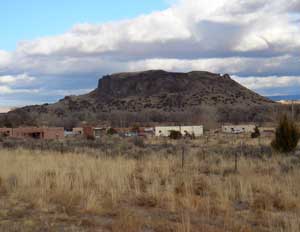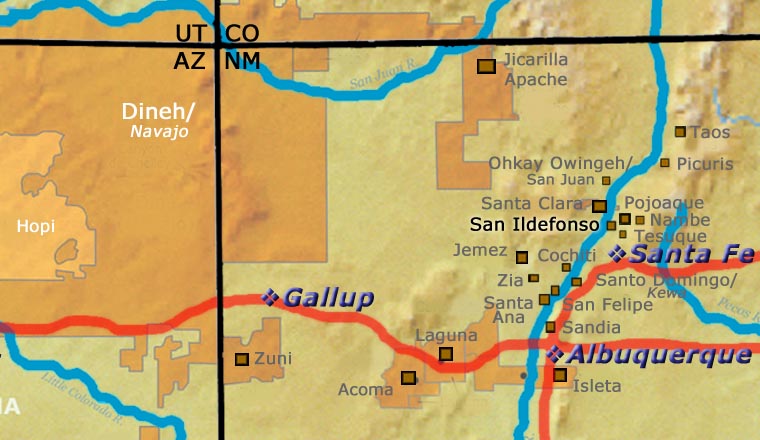
Albert & Josephine Vigil
1927-2009 & 1927-2001
San Ildefonso

Both Albert and Josephine Vigil were born in 1927. But Josephine was born Josephine Cordova. He was from San Ildefonso, she was from Taos. Contrary to pueblo tradition, when they married she moved to his home at San Ildefonso.
Albert was the son of Juanita Vigil, one of Maria Martinez' sisters. Maria and her sister Clara taught Albert and Josephine how to make pottery. But Maria encouraged them to make polychrome pottery, not the black-on-black pottery that she was famous for.
Albert and Josephine excelled at it, so much so that they earned multiple Blue Ribbons over a quarter century of participation in Santa Fe Indian Market. They started in 1976 and earned a Second Place ribbon for a red bowl. The next year they earned a Best of Division ribbon for a painted red on buff pot. That began a long string of ribbons earned at both Santa Fe and the Eight Northern Pueblos Arts & Crafts Show.
Josephine usually made the pots and Albert painted them. His father was Tse-Yu-Mu (Romando Vigil) of the San Ildefonso School of watercolor artists.
Josephine passed on in 2001, Albert in 2009.
Some of Albert's earliest paintings were included in the Away From Home: American Indian Boarding School Stories exhibit at the Heard Museum in the Spring of 2019.
100 West San Francisco Street, Santa Fe, New Mexico 87501
(505) 986-1234 - www.andreafisherpottery.com - All Rights Reserved

San Ildefonso Pueblo
San Ildefonso Pueblo is located about twenty miles northwest of Santa Fe, New Mexico, west of Pojoaque, south of Santa Clara and straddling the Rio Grande. Although their ancestry has been traced to prehistoric pueblos in the Greater Mesa Verde area, the prehistoric pueblo at Tsankawi, in a non-contiguous parcel of Bandelier National Monument, is their most recent ancestral home. Tsankawi abuts the reservation on its northwest side.
Franciscan monks named the village after San Ildefonso and in 1617, forced the tribe to build a mission church on top of the village's main kiva. Before that the village was known as Powhoge, "where the water cuts through" (in Tewa). Today's pueblo was established as long ago as the 1300s. When the Spanish arrived in 1540, they estimated the village population at about 2,000.
That mission was destroyed during the Pueblo Revolt of 1680 and when Don Diego de Vargas returned to reclaim San Ildefonso in 1694, he found virtually all the Tewa people camped out on top of nearby Black Mesa. After an extended siege the two sides negotiated a treaty and the people returned to their villages. However, the next 250 years were not so good for them.
The swine flu pandemic of 1918 reduced the pueblo's population to about 90. Their population has grown to more than 600 since but the only economic activity available on the pueblo itself involves creating art in one form or another. The only other work is off-pueblo. San Ildefonso's population is small compared to neighboring Santa Clara Pueblo, but the pueblo maintains its own religious traditions and ceremonial feast days.
San Ildefonso is most known for being the home of the most famous Pueblo Indian potter, Maria Martinez. Many other excellent potters from this pueblo have produced quality pottery, too, among them: Blue Corn, Tonita and Juan Roybal, Dora Tse Pe and Rose Gonzales. Of course, the descendants of Maria Martinez are still important pillars of San Ildefonso's pottery tradition. Maria's influence reached far and wide, so far and wide that even Juan Quezada of the Mata Ortiz pottery renaissance in Chihuahua, Mexico, came to San Ildefonso to learn from her.
100 West San Francisco Street, Santa Fe, New Mexico 87501
(505) 986-1234 - www.andreafisherpottery.com - All Rights Reserved

